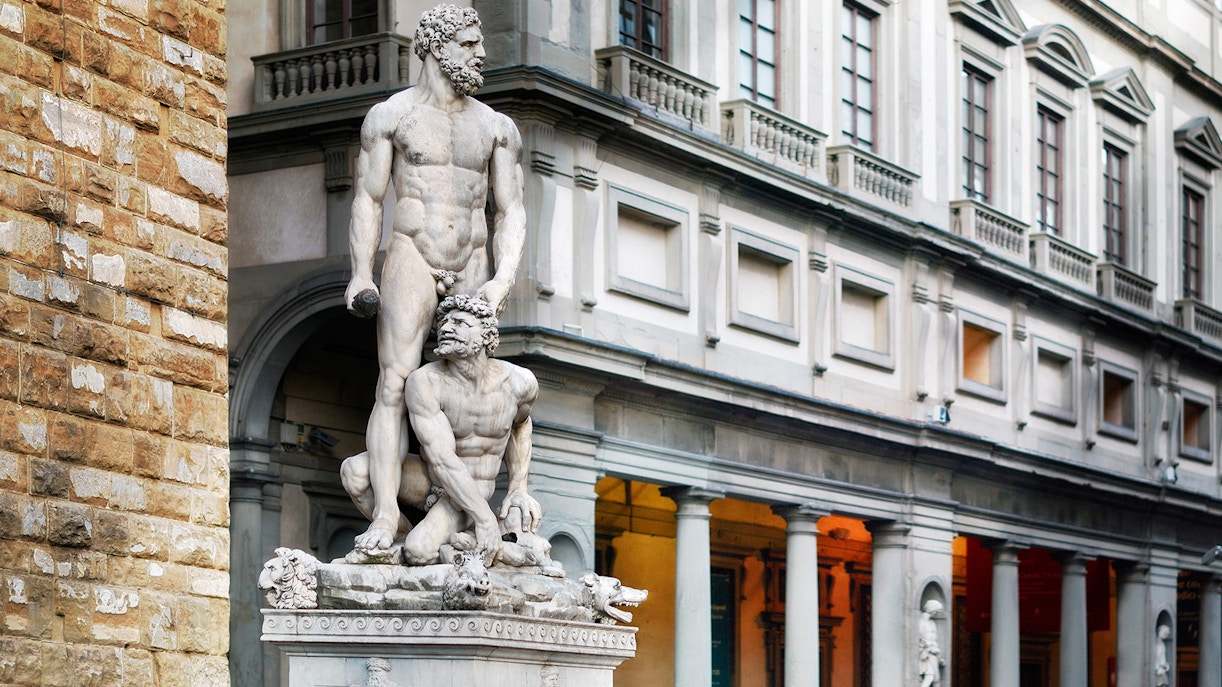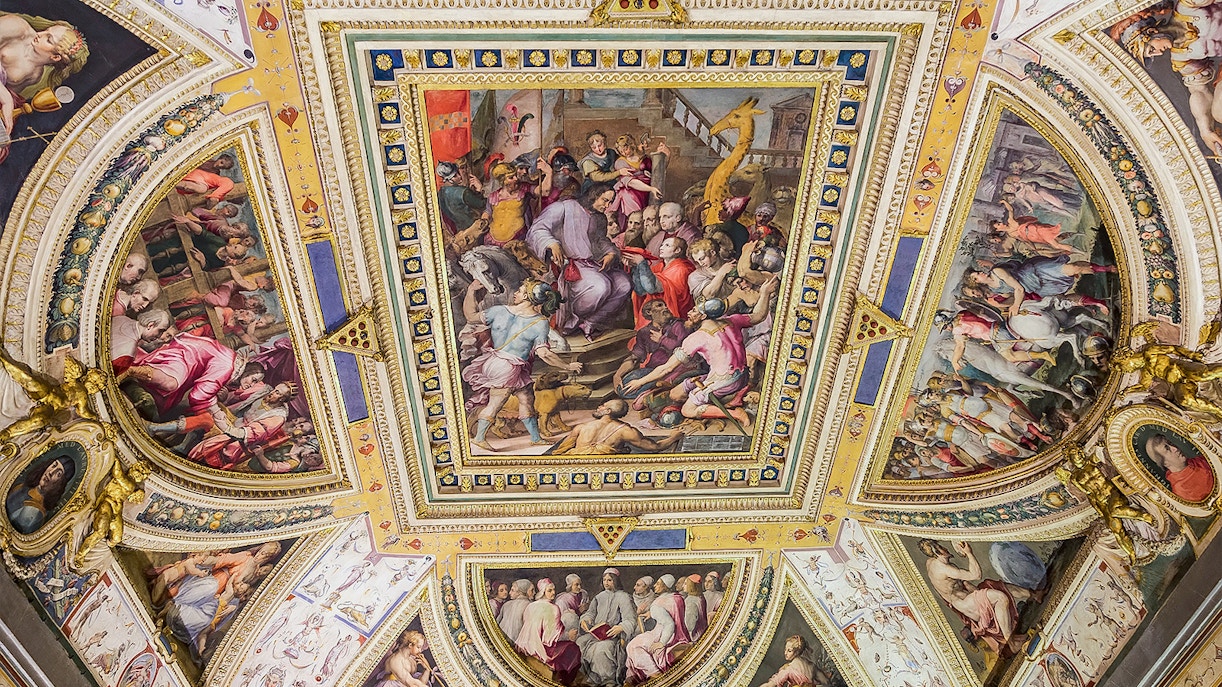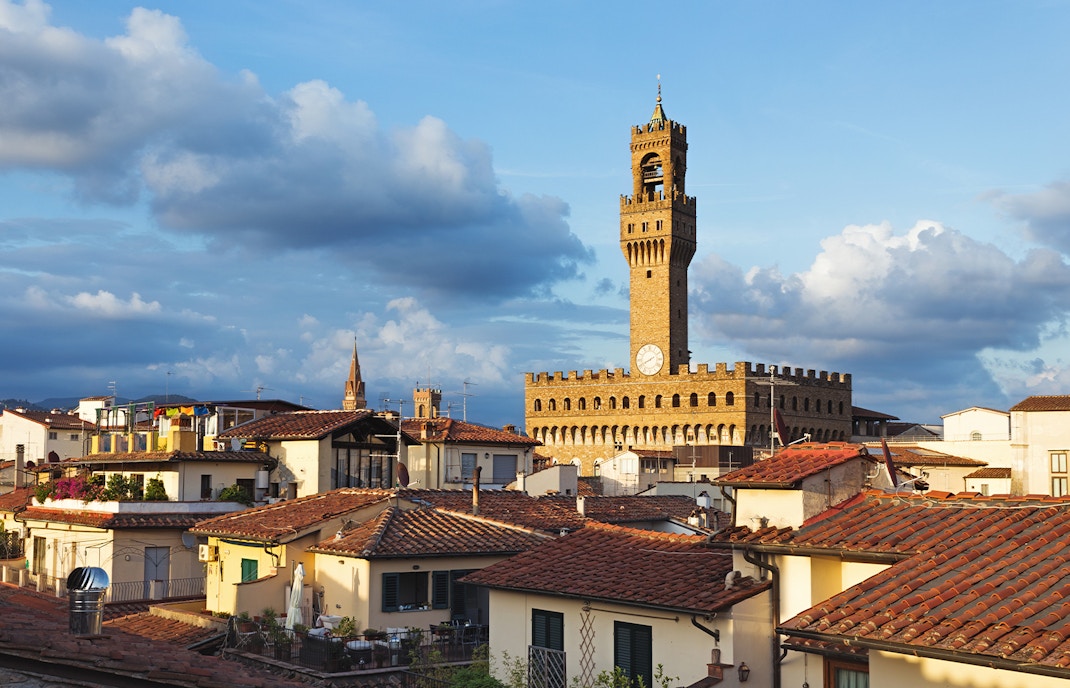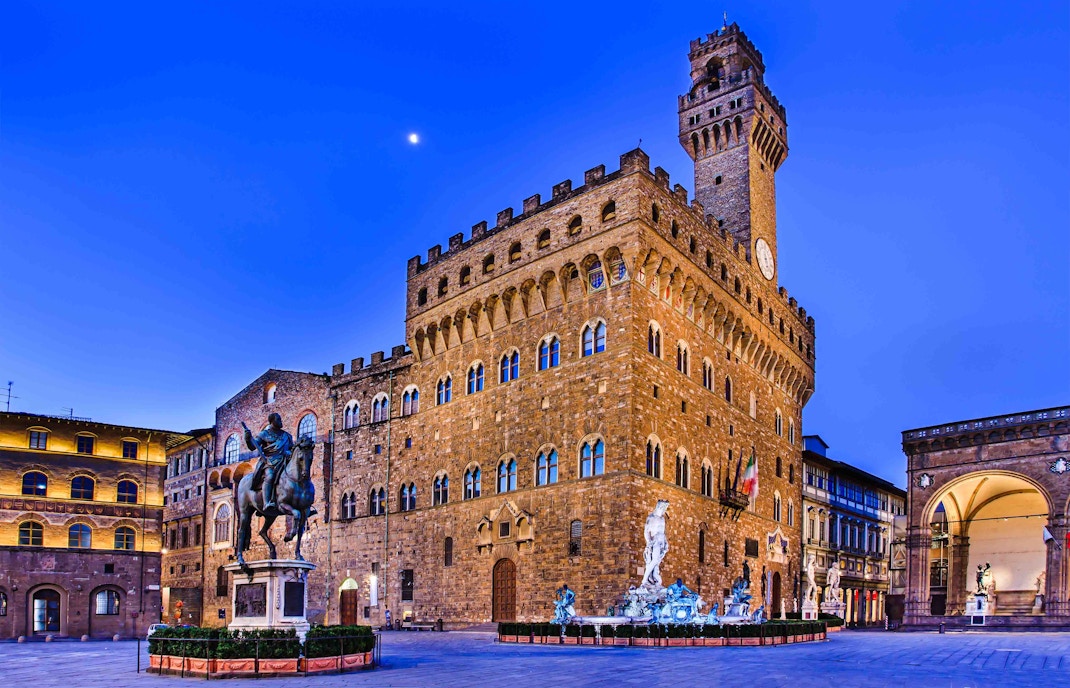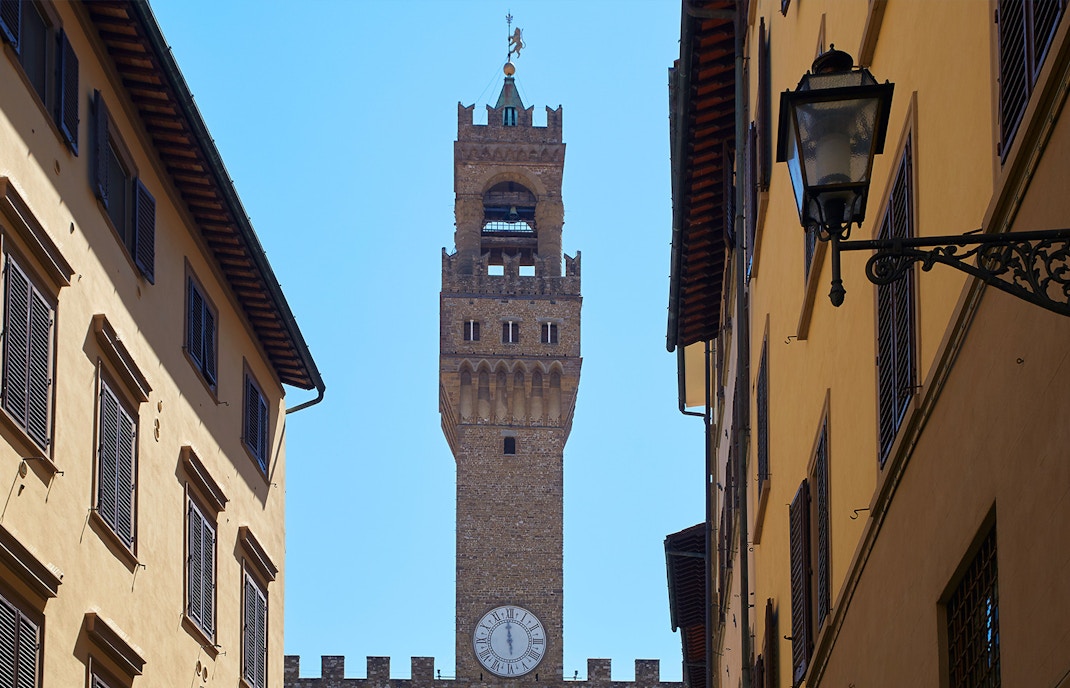In 1299, the Florentine government commissioned the construction of a formidable palace to serve as the seat of the city's governing body, the Signoria. Designed by architect Arnolfo di Cambio, the Palazzo della Signoria, as it was originally known, was strategically positioned in the city center. Its robust, fortress-like design symbolized the republic's authority and was intended to protect magistrates from internal strife and external threats.
The building was completed in 1314, featuring solid rusticated stonework and a distinctive 94-meter-high tower, known as Arnolfo Tower. This tower incorporated the remains of an earlier structure, the Foraboschi family's La Vacca tower, signifying continuity amidst change.
The grand 52 by 23 meter-square Salone dei Cinquecento (Hall of the 500), was originally constructed in 1494 under the direction of Simone del Pollaiolo for Savonarola's republican government.

